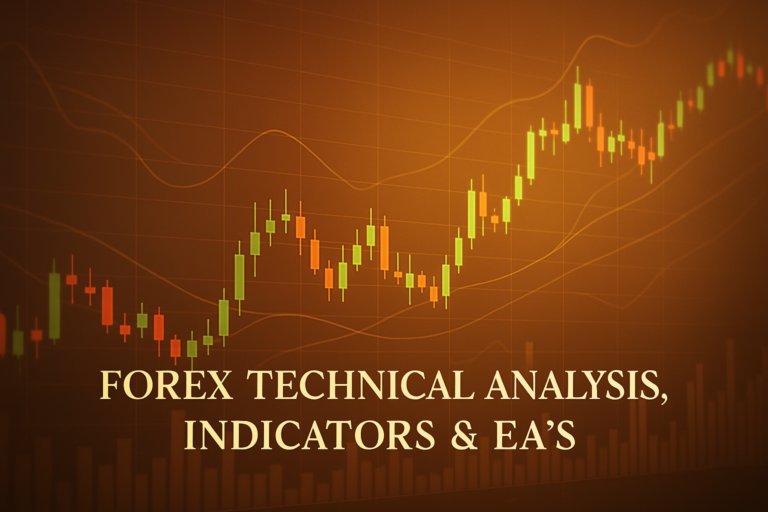
In the world of Forex trading, every detail matters. One detail that can make or break a trade is the swap calculation. It might sound technical, but incorrect swap calculations can lead to unexpected costs or profits. Both beginner and professional traders face this challenge. They often find themselves confused about how swap rates work, leading to unwanted surprises in their trading accounts.
Understanding swap calculations is vital. Without it, traders risk losing money or missing out on potential gains. This post will guide you through the issue of incorrect swap calculations, providing practical solutions and advice to help you navigate this tricky aspect of Forex trading.
Understanding the Problem
The issue of incorrect swap calculations arises when traders are unaware of how swaps are determined and applied. A swap is the interest paid or received for holding a Forex position overnight. It’s important to know that different brokers may use different methods for calculating swaps. This inconsistency can lead to confusion and unexpected charges or credits in your trading account.
For instance, imagine you hold a long position on EUR/USD and expect to earn a swap. However, if your broker miscalculates it, you may end up paying a fee instead. Such situations can create frustration and mistrust among traders. Real-life examples show that many traders have been caught off-guard by unexpected swap charges, especially during market volatility.
Solutions for Incorrect Swap Calculations
To tackle the issue of incorrect swap calculations, follow these simple steps:
Step 1: Understand Your Broker’s Swap Policy
Different brokers have different methods for calculating swaps. Read their policies carefully. This will help you anticipate potential swap fees.
Step 2: Use Swap Calculators
Many websites offer free swap calculators. These tools can help you estimate swaps before opening a position, giving you a clearer picture of potential costs.
Step 3: Keep Track of Market Conditions
Swap rates can change based on market conditions. For example, during high volatility, swap rates might increase. Stay informed about market trends.
Step 4: Consult with Your Broker
If you notice discrepancies, reach out to your broker immediately. They can explain the calculations and correct any mistakes.
Best Practices
- Check Swap Rates Regularly: Swap rates can fluctuate, so monitor them frequently.
- Trade During Off-Peak Hours: Sometimes, holding trades overnight can lead to higher swap fees. Consider closing positions before the day ends.
- Choose Swap-Free Accounts: If you are concerned about swap calculations, consider using an Islamic account that does not charge swaps.
Pro Tips & Warnings
Advanced traders should always double-check swap rates before making significant trades. Use multiple sources to verify swap calculations and watch for any unusual changes.
Frequently Asked Questions
How do I detect this issue in real-time?
Monitoring your trading account regularly can help you spot incorrect swap calculations. Check your account balance and transaction history daily. If you notice a sudden change, investigate further.
Can brokers legally do this?
Brokers must follow regulations, but mistakes can happen. It’s essential to read the fine print of your broker’s terms and conditions to understand their obligations regarding swap calculations.
What tools can I use to prevent this?
Utilizing swap calculators, trading journals, and market analysis tools can help you keep track of potential swap fees, reducing the risk of incorrect calculations.
Is this problem more common in specific market conditions?
Yes, during volatile market conditions, swaps can change rapidly. It’s crucial to stay informed about market news and trends to anticipate these changes.
Conclusion
In summary, incorrect swap calculations can be a significant issue for Forex traders. By understanding this problem and following the solutions provided, you can manage and avoid unnecessary surprises. Stay informed, and improve your trading strategies to navigate the Forex market confidently.
User Engagement & Encouragement Stay curious and proactive about your Forex trading journey. Learning about swap calculations can empower you to trade smarter.
Recommended Next Steps
To further enhance your understanding of Forex trading, consider the following steps:
- Research different brokers and their swap policies.
- Practice using swap calculators before executing trades.
- Join Forex trading forums to share experiences and tips with other traders.
For more insights into forex trading, check out Investopedia and FXStreet.
Expand Your Knowledge
- 📌 Forex Trading Learning Road Map
- 📌 Forex Trading Course with no Fees
- 📌 Forex Trading Issues, Problems, and Solutions
- 📌 Forex Daily Forecast & Live Updates
- 📌 Forex Fundamental & News Analysis: Tomorrow’s Market Movers & Trade Opportunities
- 📌 Forex Education Hub: Learn & Profit
- 📌 Forex Technical Analysis, Indicators & EA’s
Start Trading Today
Ready to take your forex trading to the next level? Open an account with Exness, one of the most trusted platforms in the industry. 👉 Sign Up Now and start trading with confidence!
Exness stands out with ultra-low spreads for mini traders, instant withdrawals, and zero spread accounts for pro traders. Trusted since 2008, Exness offers lightning-fast execution, no hidden fees, and a secure, transparent trading environment—giving you the edge you need to succeed. 🚀 Join now and trade smarter!
Watch this helpful video to better understand Incorrect Swap Calculations:
Note: The video above is embedded from YouTube and is the property of its original creator. We do not own or take responsibility for the content or opinions expressed in the video.
In the world of Forex trading, calculating lot sizes and pips can often feel overwhelming, especially when dealing with various brokers, prop firms, and different contract sizes. Many traders find the manual calculations time-consuming, leading to missed trading opportunities as they scramble to input their data. However, this video presents a streamlined method for calculating lot sizes in less than two seconds, significantly reducing the effort and time involved. The approach outlined is compatible with all trading instruments and brokers that support automated trading, making it a versatile solution for traders. By using a trade manager, traders can set their desired risk percentage and automatically generate the correct lot size, stop-loss, and take-profit levels swiftly. This method not only enhances efficiency but also ensures consistent risk management across all trades, which is essential for maintaining a steady equity curve and becoming consistently profitable in trading.
The video further delves into the evolution of trading practices, highlighting the journey from manual calculations to the sophisticated use of trade managers and hotkeys. Initially, traders would manually calculate lot sizes, which was not only slow but often led to errors and mismanaged risk. The transition to online calculators and custom spreadsheets offered some improvement but still lacked the speed and efficiency required in fast-moving markets. The current method using a trade manager allows traders to execute trades with precision and speed, enabling them to focus more on market analysis rather than getting bogged down in calculations. Hotkeys play a crucial role in this process, allowing traders to enter and exit trades, manage positions, and set parameters with a single key or a quick combination. This evolution in trading technology not only saves time but also empowers traders to make informed decisions quickly, ensuring they can capitalize on market movements effectively. For those interested in elevating their trading strategies, the video promises more insights into elite risk management strategies and techniques.



